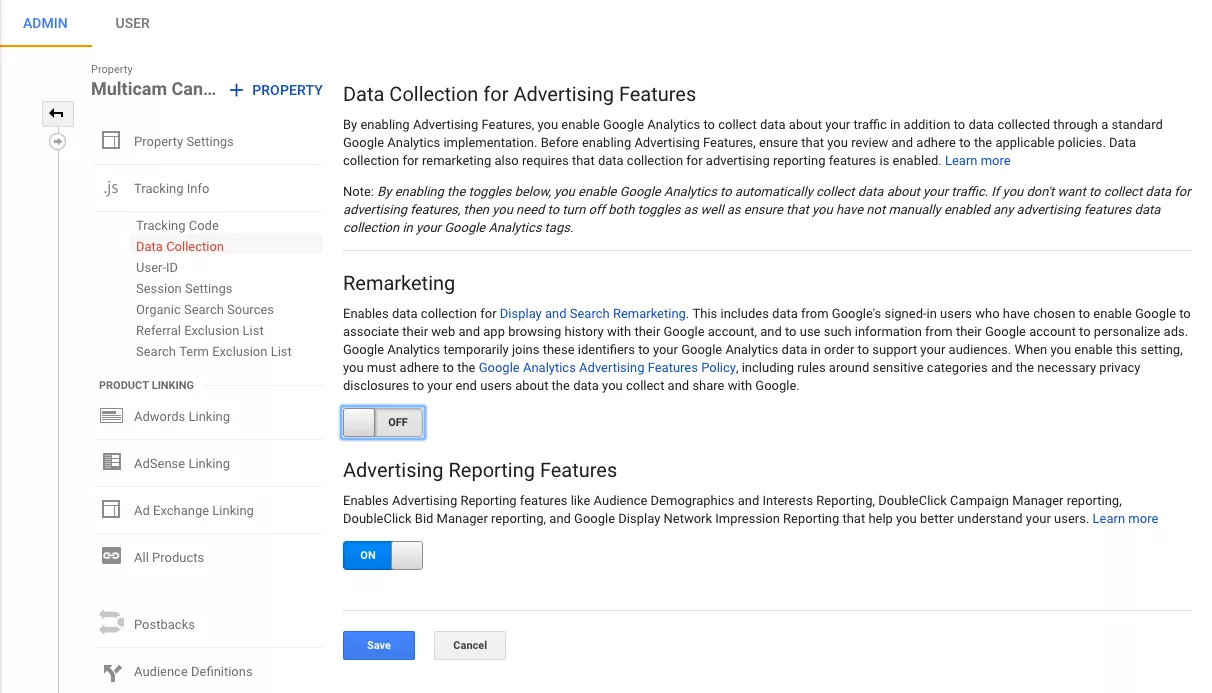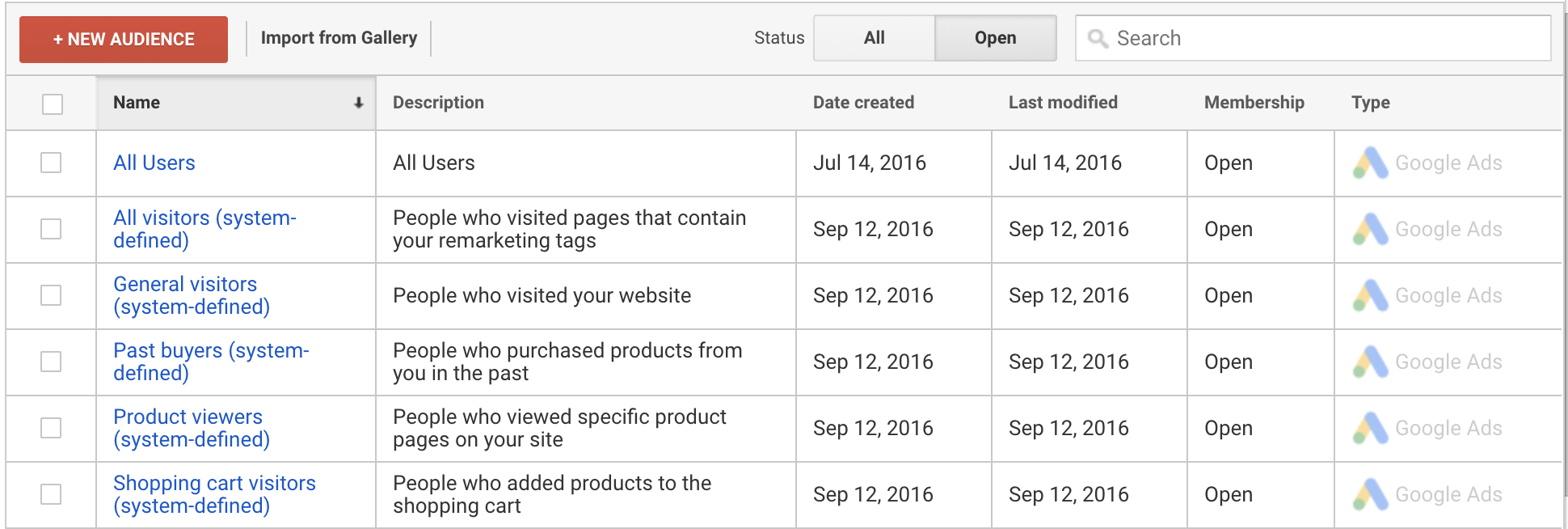A Total Overview to Remarketing In Google Analytics
A Total Overview to Remarketing In Google Analytics
Blog Article
Maximize Your ROI With Remarketing in Google Analytics
In the world of digital advertising, the utilization of remarketing strategies within Google Analytics has actually shown to be a powerful tool for improving return on investment. By taking advantage of the power of user information and tailoring advertisements to specific audience sections, services can substantially amplify their conversion rates. Nonetheless, the actual key lies in the art of accuracy - comprehending individual actions, crafting compelling advertisements, and continually refining techniques to drive optimum results. The trip to making best use of ROI via remarketing is a nuanced course led with insights and chances that can reshape the trajectory of your marketing ventures.
Recognizing Remarketing in Google Analytics
Recognizing remarketing in Google Analytics is vital for enhancing your digital advertising technique. Remarketing allows you to target individuals that have actually formerly visited your internet site or interacted with your application, providing them with customized advertisements as they surf other websites or utilize other applications within the Google Show Network. This strategy aids maintain your brand top of mind and urges users to go back to your site, eventually raising the possibility of conversion.
By utilizing Google Analytics, you can track the efficiency of your remarketing campaigns, gaining valuable understandings into customer behavior, engagement, and conversions. This information allows you to refine your targeting, messaging, and bidding process approaches to improve the overall performance of your projects.
In addition, comprehending the different kinds of remarketing checklists available in Google Analytics, such as standard, dynamic, and comparable audiences, permits you to develop tailored and extremely fractional campaigns customized to specific user sections. This degree of granularity can significantly enhance the significance and impact of your remarketing initiatives, ultimately maximizing your return on financial investment.
Establishing Remarketing Listings
To efficiently implement remarketing campaigns in Google Analytics, the first step includes developing and setting up remarketing checklists targeting particular user segments based upon their interactions with your internet site or application. By setting up remarketing checklists, you can customize your advertising initiatives to get to users who have already revealed interest in your services or products.
To start, browse to the Admin area of your Google Analytics account and choose the Residential or commercial property where you intend to create the remarketing listing. Under the Residential or commercial property column, click on 'Audience Definitions' and pick 'Target markets.' Next, click the red 'New Audience' button and select 'Create New' to define the specifications for your remarketing listing.

Crafting Effective Remarketing Advertisements

When crafting your advertisements, concentrate on developing attention-grabbing headlines and engaging visuals that stand out to prospective consumers. Incorporate solid calls-to-action that encourage customers to revisit your website and finish a wanted action. Use vibrant remarketing to reveal customized ads featuring service or products that users have actually previously checked out on your website.
Furthermore, make sure that your advertisements are mobile-friendly because a considerable portion of internet web traffic originates from smart phones. Examination different advertisement variations to determine which messages and layouts drive the very best results. By constantly refining and maximizing your remarketing advertisements based on efficiency information, you can maximize their performance and boost your return on financial investment.
Studying Remarketing Performance

Through Google Analytics, online marketers can track the efficiency of their remarketing campaigns in real-time, permitting them to recognize fads, patterns, and areas for renovation quickly. By analyzing the information, marketing experts can determine which advertisements are carrying out well, which target market sections are reacting favorably, and which networks are driving the most conversions. This level of granularity enables marketing experts to make data-driven decisions to enhance their remarketing projects for better outcomes.
Maximizing ROI With Remarketing
Assessing remarketing information in Google Analytics allows marketing experts to determine chances for maximizing roi (ROI) via calculated modifications - What Is “Remarketing” In Google Analytics?. To optimize ROI with remarketing, it is crucial to comprehend the actions of your audience. By examining customer interactions, such as the pages they checked out, the items they viewed, or the activities they took on your website, you can customize your remarketing campaigns better
Segmenting your target market based on their actions enables you to produce customized and targeted advertisements that are more probable to resonate with them. By revealing get more relevant advertisements to details sections of your audience, you can enhance the possibilities of conversion and eventually boost your ROI.
Additionally, examining various advertisement creatives, messaging, and offers can assist recognize what reverberates ideal with your target market. A/B screening permits you to experiment with different components of your ads to establish what drives the greatest involvement and conversion prices.
Final Thought
Finally, taking full advantage of ROI with remarketing in Google Analytics requires a critical technique to assessing user actions, segmenting audiences, producing customized advertisements, and enhancing project efficiency. By leveraging data-driven insights and testing various methods, organizations can enhance their remarketing efforts to drive greater engagement and conversion rates. This systematic strategy makes sure that sources are efficiently designated towards optimizing returns on investment in remarketing campaigns.
Next, click on the red 'New Target market' switch and choose 'Develop New' to define the criteria for your remarketing checklist.
By continually refining and optimizing your remarketing advertisements based on efficiency information, you can optimize their effectiveness and boost your return on financial investment.
By delving into these insights, marketers can get an extensive understanding of how their remarketing efforts are reverberating with their target audience and driving conversions. To take full advantage of ROI with remarketing, it is crucial to understand the habits of your target market.In verdict, making the most of ROI with remarketing in Google Analytics requires a tactical method to assessing customer actions, segmenting target markets, producing tailored ads, and optimizing campaign performance.
Report this page